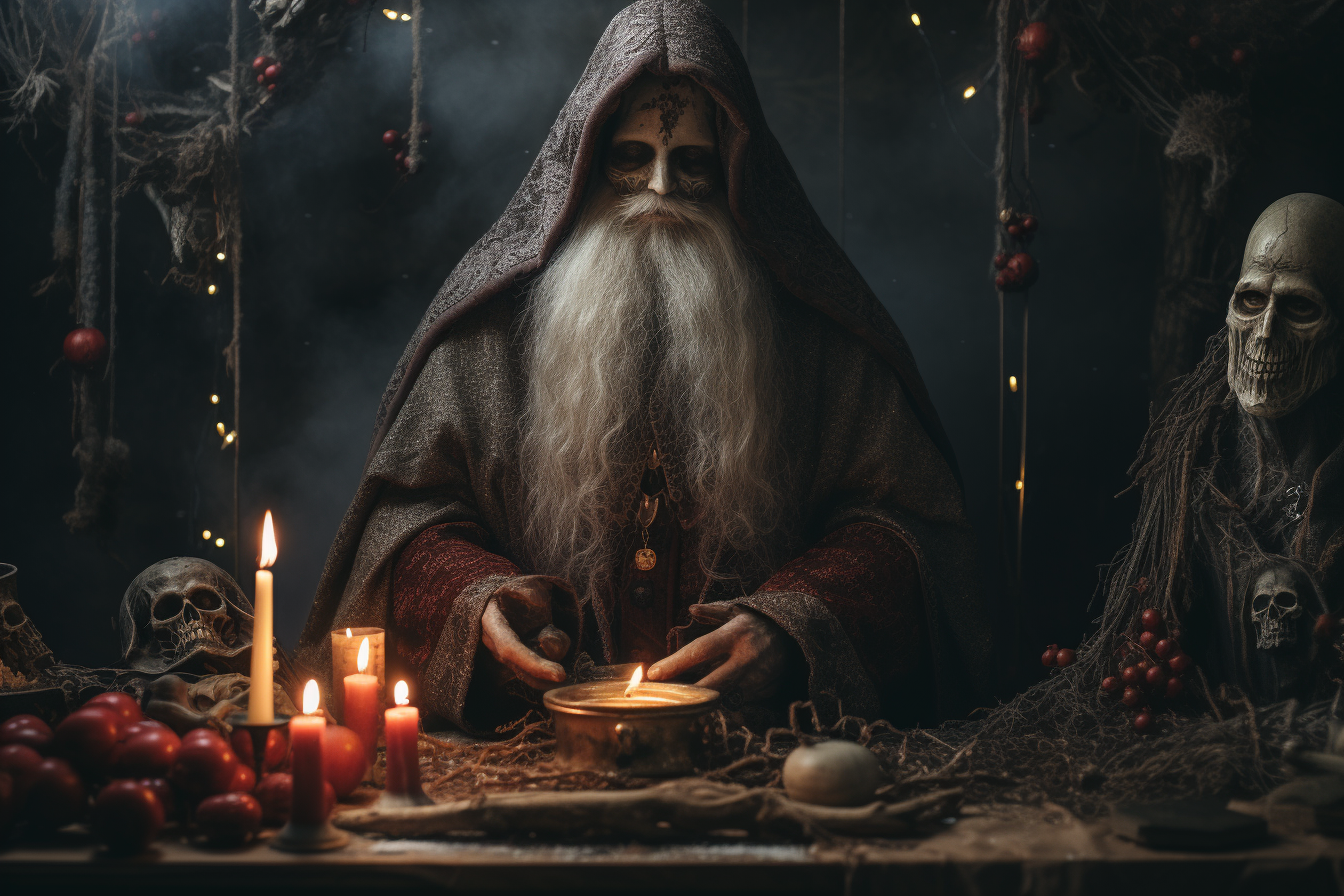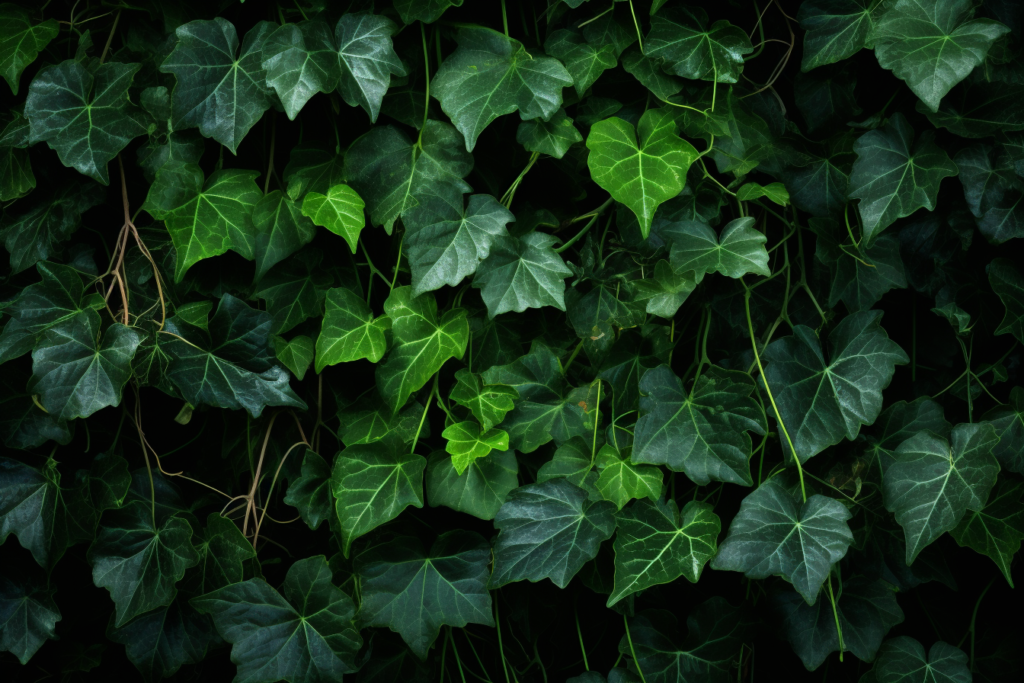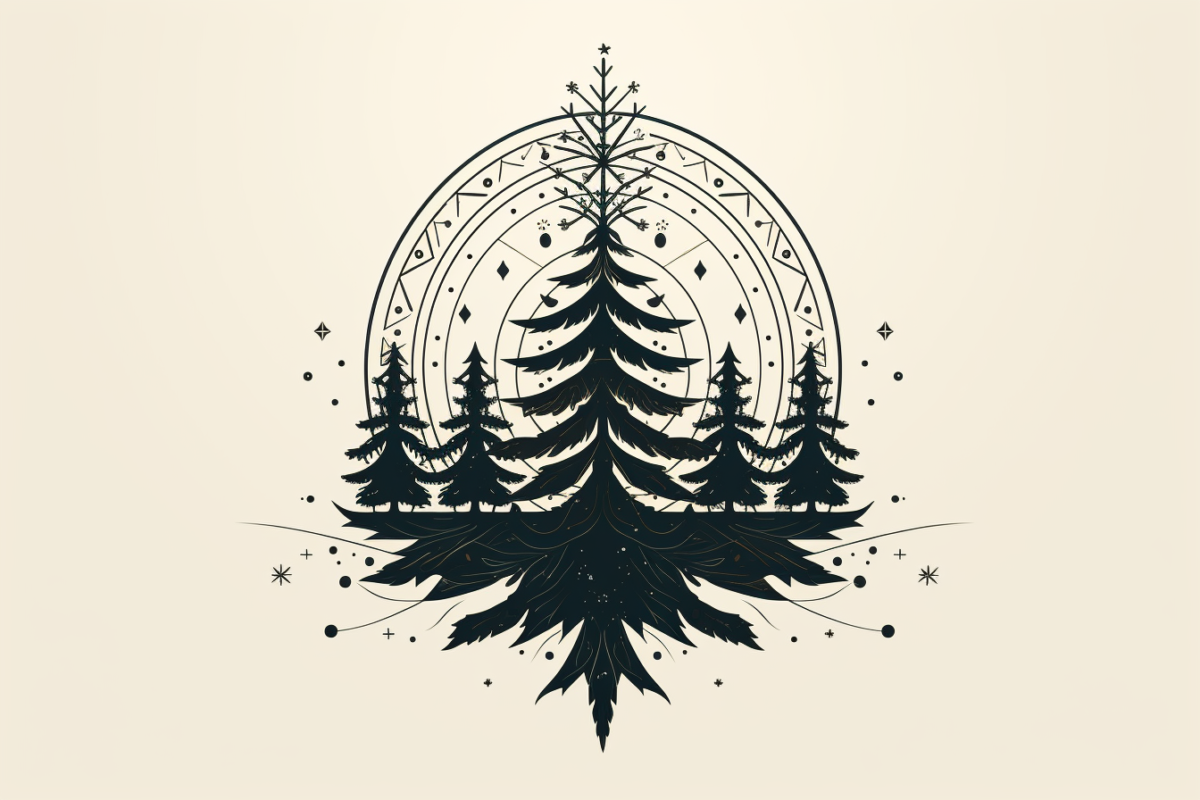As we approach the time of year when the nights are longer, and our patience at crowded malls grows shorter, let’s take a deep dive into the Pagan origins of Christmas. Yes, the holiday that brought you joy and chaotic family gatherings has a history, and we’re about to unveil it – from ancient ceremony to modern-day revelry.
Yule’s Date on the Calendar: When Is This Pagan Party?
Alright, let’s get our Pagan party planner hats on and discuss when this Yule thing takes place. Unlike Christmas, which has a stable calendar date, Yule keeps you on your toes. Typically, it lands somewhere between December 20th and 23rd.
Aligning with the Solstice
One thing that’s more precise, though, is its alignment with the winter solstice. That’s the day when the Northern Hemisphere tilts farthest from the sun, giving us the shortest day and the longest night. Yule loves to make its entrance right there. So, when everyone else is busy decking the halls, you’ll find Pagans tuning in to the cosmos.
A Short History of Yule

To fully grasp the magic of Pagan “Christmas”, we must journey back to the times when ancient civilizations knew how to throw a winter solstice party. The Romans had Saturnalia, a festival where societal norms went out the window, and the Germanic folks reveled in Yule, a celebration of the sun’s return. Pagan traditions thrived on the triumphant spirit of light, greenery, and feasting. Sounds pretty familiar, right?
Saturnalia: Days of Utter Chaos
In the heart of the Roman Empire, Saturnalia unfolded in mid-December. This joyous festival of lawlessness saw the reversal of roles as masters served their slaves, and gambling, excessive drinking, and uninhibited revelry reigned supreme. Candlelit processions and banquets in honor of Saturn, the god of agriculture, set the stage for an annual spectacle of gluttony and indulgence. While the Christian Church may have sought to replace this Pagan extravaganza, traces of Saturnalia’s chaos still lurk beneath the veneer of contemporary Christmas.
The Spirit of Light: Yule’s Germanic Delight
In the frosty lands of Germania, the Yule festival celebrated the winter solstice, welcoming the promise of lengthening days. Homes were decorated with evergreen boughs, the Yule log was set ablaze, and feasting brought warmth and unity to communities. The Yule log itself symbolized the returning sun, and the ashes were believed to protect the home from evil spirits. The spirit of light that these rituals evoked remains a profound part of Christmas today.
A Timeline of Yule and Christmas:
Ancient Times:
Yule, a Pagan festival celebrating the winter solstice, was observed by various ancient civilizations. The Germanic people celebrated Yule as a tribute to the sun’s return and the promise of longer days. Saturnalia, a Roman festival of revelry, was also observed around the same time.
4th Century:
Christianity began to spread, and in an effort to convert Pagans, the early Christian Church adapted the date of Yule to celebrate the birth of Jesus. December 25th was chosen as the birth date of Jesus, coinciding with the Pagan festivities.
Middle Ages:
Yule traditions evolved, incorporating Christian elements. The Yule log, a symbol of light and warmth, became a prominent part of Yule celebrations. It was believed to bring protection and prosperity to households when burned.
17th Century:
Christmas began to take shape as a more religious holiday. The Puritans in England and America disapproved of the Pagan roots associated with Yule and worked to eradicate some of the festive customs. (The more I learn about Puritans, the more fun they seem…)
19th Century:
Christmas underwent a transformation, becoming a more family-centered holiday. Victorian-era traditions, such as decorating Christmas trees and exchanging gifts, became popular. Charles Dickens’ novel, A Christmas Carol, helped shape the modern idea of Christmas as a time for generosity and goodwill.
20th Century:
Christmas became widely commercialized, with the influence of marketing and consumerism. Santa Claus, inspired by various folklore figures, became an iconic symbol of the holiday. The emphasis on gift-giving and holiday shopping grew during this time.
Present Day:
Christmas continues to be celebrated worldwide, combining elements of both its Christian and Pagan origins. Many people embrace the festive spirit of Yule, decorating their homes with greenery and incorporating Pagan-inspired symbols into their celebrations.
Decorating for Yule: How to Deck the Halls, Pagan-Style
Time to add some Pagan panache to your holiday decor! Pagan Yule decorations are a mix of nature’s finest and some carefully chosen symbols. You won’t find any inflatable Santas (Thank Oden, those things freak me out!) or plastic reindeer here.
Nature, Get in My House!
Forget the glitzy lights and plastic reindeer – Pagan-inspired decor is all about bringing the untamed outdoors inside. Deck the halls with holly, ivy, evergreen boughs, and mistletoe to reconnect with nature’s essence. No need for battery-operated snowmen; these natural adornments will remind you that the wild still exists amidst the plastic wreaths and blinking LEDs.
Greenery Galore
First up, greenery. And not just because it’s the easiest to find – although it is. Evergreens, holly, mistletoe, and even poinsettias are all welcome in a Pagan home during Yule. Why? Because they’re hardy little things that survive the winter. They provide a connection to the natural world during these chilly times.
Holly:
In pagan mythology and Yule celebrations, holly is a symbol of protection, renewal, and the eternal cycle of life. The vibrant green leaves of the holly plant, which remain throughout the winter, represent the enduring vitality of nature, even during the darkest and coldest months of the year. The sharp, pointed leaves of holly are seen as protective, guarding against negative energies and evil spirits.

During Yule, holly is often used to decorate homes and sacred spaces, along with other evergreens. It is believed that by hanging holly and other evergreen decorations, people invite the spirit of nature into their homes and celebrate the promise of new life as the sun begins its return after the Winter Solstice.
In pagan traditions, holly is a powerful symbol of the winter season and a reminder of the interconnectedness of all life. Its vibrant red berries, in particular, are associated with the sun and its return, as well as the promise of growth and renewal in the coming year.
Ivy:
In pagan mythology and Yule celebrations, ivy is a symbol of determination, fidelity, and the everlasting spirit of life. The evergreen nature of ivy, with its dark green leaves and the way it can climb and thrive even during the harsh winter months, symbolizes the continuity of life and nature’s resilience.
Ivy is often seen as a representation of the strong, enduring bonds of friendship and love, and it is a reminder of the connections that keep people together through challenging times, including the long winter nights. It is associated with the promise of renewal and the return of the sun, as Yule marks the turning point toward longer days and the eventual rebirth of nature.

During Yule celebrations, ivy is used for decorations and wreaths, signifying hope, the enduring strength of nature, and the bonds between loved ones. The inclusion of ivy in Yule traditions emphasizes the interconnectedness of all living things and the cycle of life, death, and rebirth that is central to pagan beliefs.
Mistletoe:
In pagan mythology and Yule celebrations, mistletoe is considered a symbol of love, renewal, and protection. It’s highly regarded for its connection to the sacred and the mystical.

Mistletoe was believed to have magical properties and was thought to bring good fortune and ward off evil spirits. Druids, in particular, held mistletoe in high esteem and considered it a sacred plant. During the winter solstice, they would harvest mistletoe from oak trees, performing rituals and ceremonies that were believed to bestow blessings upon those who stood beneath it.
The custom of kissing beneath the mistletoe has deep pagan roots. It symbolizes love and friendship and is often associated with the idea of renewal and rekindling bonds. Kissing beneath the mistletoe during Yule celebrations is seen as an act of goodwill and affection, reflecting the spirit of the season.
Sun Symbols Shine Bright
It’s the chilly season, so you’ll want to bring in the sun. And by “the sun,” I mean symbols of it. This is the darkest time of the year, so it’s time to call in reinforcements. Think sun wheels, sun gods, and anything resembling that warm, life-giving orb in the sky.
Lighting the Yule Log: A Pagan Primer
Yule Log Lighting 101
Alright, grab your fire-resistant gloves because we’re diving into Yule log lighting – the Pagan way. This tradition is like the ancient equivalent of those cozy Netflix “fireplace” videos, but with a lot more history and symbolism.
Choose Your Log Wisely
First things first – find yourself a Yule log. But not just any old piece of wood will do. You need one that’ll burn slow and steady. Oak and birch are good choices. The idea is to keep that Yule fire alive all night, making sure the darkness stays at bay. So, in a way, you’re like a guardian of the light. Very Pagan superhero, right?
Fireplace or Fire Pit
Now, if you have a fireplace, you’re all set – just toss that log in and light it up. But if you’re more of an outdoorsy Pagan, a fire pit in your backyard works just as well. Just be sure to check the weather and your city’s fire ordinances – you don’t want your Yule fire turning into a waterlogged disappointment or a neighborhood disaster. And remember, safety first, fellow Pagan pyromaniacs!
More tips for Yule log lighting
The Yule log, a cozy corner of Pagan Christmas, symbolizes the return of the sun’s warmth. It’s said that a large log, often from oak or ash trees, would blaze in the hearth, blessing homes with protection, prosperity, and good vibes. No fireplace for the burning ritual? No worries. You can create a tabletop version with symbols of light and set your own intentions for the season.
Creating your own Yule log is a magical way to infuse your home with the spirit of the season. Here’s a step-by-step guide to get you started:
- Select Your Log: Begin with selecting a log, maybe one made of oak or birch.
- Carve Your Intentions: Carve symbols, runes, or intentions into the log to bring your wishes to life. Each symbol should represent something meaningful to you.
- Bless Your Yule Log: Take a moment to bless your Yule log. This can be a simple personal ritual where you imbue it with your intentions and ask for the Yule log’s guidance and protection.
- Light It on the Solstice: On the night of the winter solstice, light your Yule log. It’s a time for introspection and setting your intentions into motion.
- Let It Burn: Allow your Yule log to burn through the night. Its flames symbolize the returning sun, bringing light and warmth to your home.
By following these steps, you’ll craft a Yule log infused with your own Yuletide magic.
Explore more about Yule & Paganism
Yuletide Reading and Watching:
If you’re looking for a little more Yuletide entertainment, check out these books and movies. Some are more scholarly and will give you a more in-depth understanding of the Pagan Yule holiday and traditions, and others are more for entertainment.
Books About Paganism & Yule:
Yule: Rituals, Recipes & Lore for the Winter Solstice by Susan Pesznecker

This book offers a comprehensive guide to celebrating the Winter Solstice with rituals, recipes, and insights into Pagan traditions.
“The Celtic Golden Dawn: An Original & Complete Curriculum of Druidical Study” by John Michael Greer

This book provides a deeper understanding of Druidry and its connections to Pagan traditions and the Winter Solstice.
“Yule: A Celebration of Light and Warmth” by Dorothy Morrison

“The Old Magic of Christmas: Yuletide Traditions for the Darkest Days of the Year” by Linda Raedisch

Movies about Paganism & Yule:
“The Wicker Man” (1973)
This British horror film delves into Pagan rituals and traditions as a devout Christian police sergeant investigates a mysterious disappearance on a remote Scottish island.
“The Last Winter” (2006)
This environmental horror film combines elements of climate change and the Winter Solstice as an oil company’s team working in the Arctic wilderness faces supernatural forces.
“Midsommar” (2019)
While not directly about Yule, this folk horror film explores Pagan customs and rituals during a summer solstice festival in Sweden. It provides a unique look at Paganism and its traditions, albeit in a culty, horror sort of way.
More info:
For those wanting to take the plunge into the Pagan rabbit hole, these websites offer a wealth of knowledge:
- Witchipedia: Discover a treasure trove of Pagan and Wiccan lore, including the lowdown on Yule and its eerie customs.


One reply on “Spooky Pagan Holiday History: A Quick Look At Yule”
[…] >> Spooky Pagan Holiday History: A Quick Look At Yule << […]